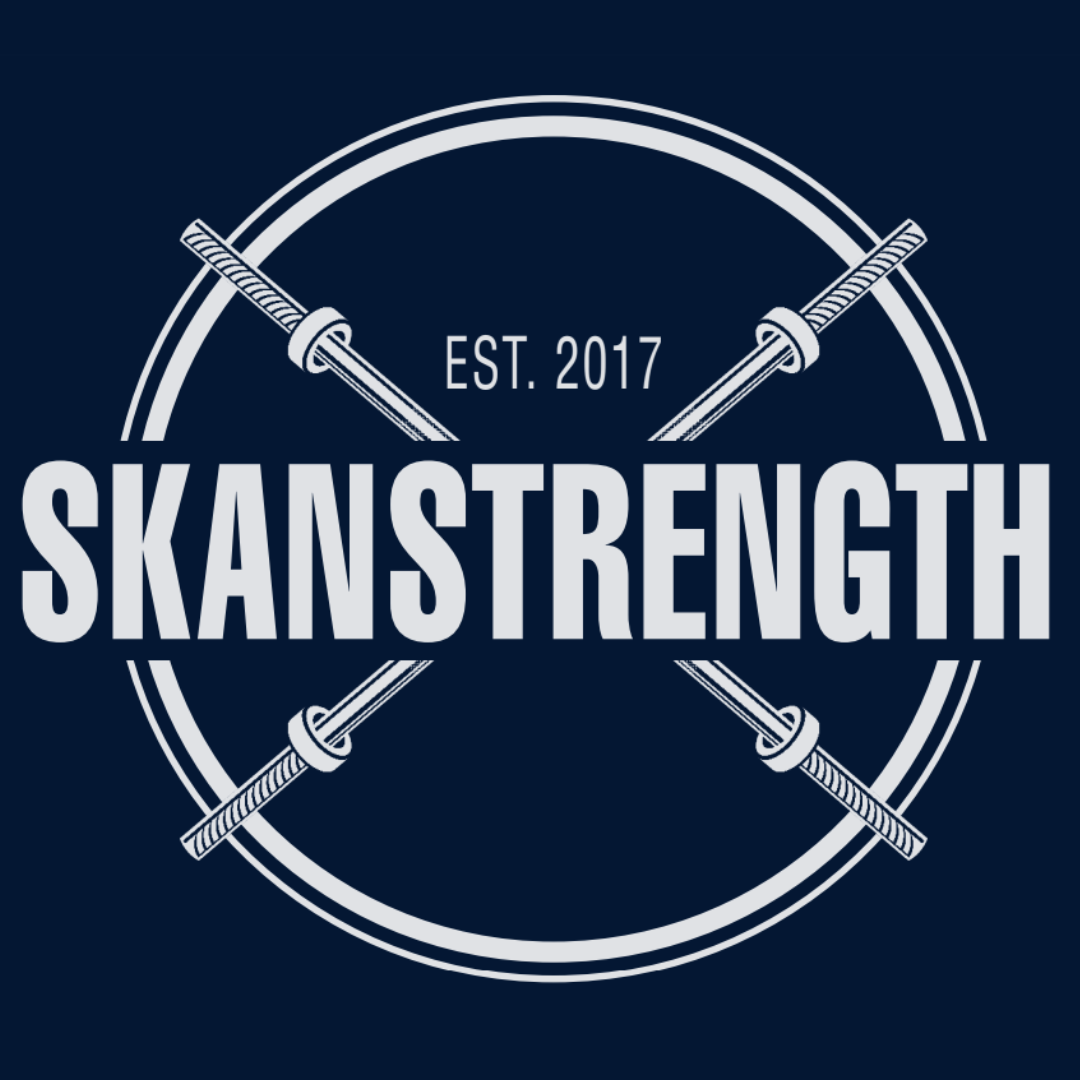The Power of Youth: Debunking Myths and Embracing the Benefits of Strength Training for Young Athletes
October 11, 2024
Debunking Myths and Embracing the Benefits of Strength Training for Young Athletes

In recent years, the topic of strength training for youth and adolescents has been the subject of much debate and misconception. However, extensive research has shown that, when properly supervised and implemented, strength training can be both safe and highly beneficial for young athletes. This blog post aims to explore the safety considerations and numerous advantages of strength training for youth, backed by scholarly resources.
Safety First: Dispelling the Myths
One of the most persistent myths surrounding youth strength training is that it stunts growth or causes unnecessary injuries. However, research has consistently debunked these claims. According to a comprehensive review by Faigenbaum et al. (2009) published in the Journal of Strength and Conditioning Research, there is no evidence to suggest that properly designed and supervised strength training programs pose any greater risk to children and adolescents than other sports and recreational activities in which they regularly participate.
In fact, the American Academy of Pediatrics (AAP) Committee on Sports Medicine and Fitness (2008) stated that strength training programs for youth can be safe and effective if proper resistance and safety precautions are followed. They emphasize the importance of qualified supervision, appropriate program design, and proper technique.
The Benefits: Building More Than Just Muscles
The advantages of strength training for young athletes extend far beyond just building muscle. Here are some key benefits supported by research:
Improved Athletic Performance:
A meta-analysis by Lesinski et al. (2016) in the British Journal of Sports Medicine found that strength training significantly improved athletic performance in youth, including enhancements in muscle strength, vertical jump, and sprint times.
Injury Prevention:
Strengthening muscles, tendons, and ligaments can help reduce the risk of sports-related injuries. A study by Emery et al. (2015) in the British Journal of Sports Medicine demonstrated that neuromuscular training programs, which include strength training components, reduced injury risk in youth sports.
Bone Health:
Strength training can increase bone mineral density in children and adolescents, as shown in a study by Virvidakis et al. (1990) published in Calcified Tissue International. This is particularly important during the critical bone-building years of youth.
Improved Body Composition:
Resistance training can help manage body weight and improve overall body composition. A review by Benson et al. (2008) in Sports Medicine found that strength training had positive effects on body composition in overweight and obese youth.
Psychological Benefits:
Participation in strength training programs can boost self-esteem and self-efficacy in young athletes. A study by Schranz et al. (2014) in the Journal of Science and Medicine in Sport reported improvements in self-concept among overweight and obese adolescents following a resistance training intervention.
Conclusion
The evidence is clear: when implemented correctly, strength training is not only safe for youth and adolescents but also provides a myriad of physical and psychological benefits. By following proper guidelines and ensuring qualified supervision, we can help young athletes build strength, improve performance, and develop healthy habits that will serve them well into adulthood.
As with any training program, it's essential to consult with healthcare professionals and certified strength and conditioning specialists to develop an appropriate plan tailored to the individual needs and goals of each young athlete.
Local Opportunity: SkanStrength
For those in the Skaneateles area looking to introduce their children to strength training in a safe and supportive environment, SkanStrength offers an excellent option.
This local gym provides small group training for kids and teens of all athletic abilities through their Youth & Teen Training program.
At SkanStrength, young athletes learn how to lift weights safely while developing a fun and healthy attitude toward taking care of their bodies. The gym prides itself on creating an environment filled with camaraderie and a positive atmosphere, making strength training an enjoyable and rewarding experience for youth and teens.
By participating in SkanStrength's program, young athletes can reap the benefits of strength training discussed in this article while receiving expert guidance and support. It's an ideal way for kids and teens in the Skaneateles community to embark on their strength training journey in a safe and encouraging setting.
References:
Faigenbaum, A. D., Kraemer, W. J., Blimkie, C. J., Jeffreys, I., Micheli, L. J., Nitka, M., & Rowland, T. W. (2009). Youth resistance training: updated position statement paper from the national strength and conditioning association. Journal of Strength and Conditioning Research, 23(5 Suppl), S60-S79.
American Academy of Pediatrics Committee on Sports Medicine and Fitness. (2008). Strength training by children and adolescents. Pediatrics, 121(4), 835-840.
Lesinski, M., Prieske, O., & Granacher, U. (2016). Effects and dose-response relationships of resistance training on physical performance in youth athletes: a systematic review and meta-analysis. British Journal of Sports Medicine, 50(13), 781-795.
Emery, C. A., Roy, T. O., Whittaker, J. L., Nettel-Aguirre, A., & van Mechelen, W. (2015). Neuromuscular training injury prevention strategies in youth sport: a systematic review and meta-analysis. British Journal of Sports Medicine, 49(13), 865-870.
Virvidakis, K., Georgiou, E., Korkotsidis, A., Ntalles, K., & Proukakis, C. (1990). Bone mineral content of junior competitive weightlifters. International Journal of Sports Medicine, 11(3), 244-246.
Benson, A. C., Torode, M. E., & Fiatarone Singh, M. A. (2008). The effect of high-intensity progressive resistance training on adiposity in children: a randomized controlled trial. International Journal of Obesity, 32(6), 1016-1027.
Schranz, N., Tomkinson, G., & Olds, T. (2014). What is the effect of resistance training on the strength, body composition and psychosocial status of overweight and obese children and adolescents? A systematic review and meta-analysis. Sports Medicine, 44(9), 1209-1223.

In the quest for effective weight loss, many individuals find themselves at a crossroads: should they focus on strength training or cardiovascular exercise? The answer, backed by scientific research, is clear: a combination of both yields the most impressive results. This article delves into the effects of strength training and cardiovascular exercise on weight loss, highlighting how SkanStrength's experienced coaches leverage this knowledge to help clients achieve their fitness goals. The Power of Strength Training for Weight Loss Strength training, also known as resistance training, has long been associated with building muscle mass. However, its benefits extend far beyond aesthetics, playing a crucial role in weight loss and overall health. Increased Resting Metabolic Rate (RMR): A study by Westcott (2012) published in Current Sports Medicine Reports found that strength training can increase RMR by about 7%, helping individuals burn more calories even at rest. Preserving Lean Body Mass: During weight loss, strength training helps preserve muscle mass. Research by Stiegler and Cunliffe (2006) in Sports Medicine showed that resistance training is crucial for maintaining muscle during calorie restriction. Long-term Fat Loss: A meta-analysis by Ismail et al. (2012) in Obesity Reviews demonstrated that resistance training is effective for reducing body fat percentage and total fat mass. The Cardiovascular Edge in Weight Loss Cardiovascular exercise, often praised for its heart health benefits, is also a powerful tool for weight loss: Calorie Burn: Aerobic exercises like running, cycling, or swimming can burn a significant number of calories in a single session. A study by Willis et al. (2012) in the Journal of Applied Physiology found that aerobic training is more effective than resistance training at reducing overall body mass and fat mass in overweight or obese adults. Improved Insulin Sensitivity: Cardiovascular exercise enhances insulin sensitivity, which can aid in weight management. Research by Motiani et al. (2017) in Diabetes, Obesity and Metabolism showed that both moderate and high-intensity aerobic exercise improve insulin sensitivity in individuals with type 2 diabetes. Appetite Regulation: Some studies suggest that aerobic exercise may help regulate appetite hormones. A review by Stensel (2010) in Proceedings of the Nutrition Society found that acute exercise does not increase hunger or energy intake and may even temporarily decrease appetite. The Synergistic Effect: Combining Strength and Cardio While both strength training and cardiovascular exercise are independently effective for weight loss, their combination yields superior results: Enhanced Fat Loss: A study by Ho et al. (2012) in BMC Public Health found that a combination of resistance and aerobic exercise was more effective at reducing body fat and waist circumference than either modality alone. Improved Body Composition: Research by Sigal et al. (2014) published in Annals of Internal Medicine demonstrated that combined aerobic and resistance training improved body composition more than either type of exercise alone in adolescents with obesity. Long-term Weight Management: A review by Andersen and Jakicic (2009) in Obesity Reviews suggested that incorporating both aerobic and resistance training into weight loss programs may improve long-term weight loss maintenance. The Importance of Variety in Training While the combination of strength training and cardiovascular exercise is crucial for effective weight loss, the way these exercises are structured and varied plays a significant role in maximizing results and ensuring long-term success. Diverse Rep Ranges and Weights A well-designed strength and cardiovascular training program should incorporate a mix of: Low Rep, Medium to Heavy Weight : This approach, typically involving 1-5 repetitions with heavier weights, is excellent for building maximal strength and power. A study by Schoenfeld et al. (2015) in the Journal of Strength and Conditioning Research found that training with heavy loads was effective for maximizing strength gains. High Rep, Light Weight: This method, usually involving 15 or more repetitions with lighter weights, is beneficial for muscular endurance and can contribute to calorie burn. Research by Campos et al. (2002) in the Journal of Strength and Conditioning Research showed that high-repetition training led to greater improvements in local muscular endurance. Moderate Rep, Moderate Weight: This middle-ground approach, typically in the 6-12 repetition range, is often associated with hypertrophy (muscle growth) and can provide a balance of strength and endurance benefits. Wide Variety of Exercise Selections Incorporating a diverse range of exercises is crucial for several reasons: Prevent Overuse Injuries: By varying exercises, you distribute stress across different joints and muscle groups, reducing the risk of overuse injuries. A review by Lorenz and Reiman (2013) in Sports Health emphasized the importance of exercise variation in injury prevention. Continuous Adaptation: Regularly changing exercises challenges the body to adapt to new movement patterns and stimuli. This concept, known as progressive overload, is fundamental to continuous improvement, as noted by Kraemer and Ratamess (2004) in Medicine & Science in Sports & Exercise. Maintain Metabolic Rate: Variety in training helps keep the "metabolic engine" revved up. A study by Treuth et al. (1996) in the American Journal of Clinical Nutrition found that varying exercise intensity could lead to increased energy expenditure post-exercise. Functional Fitness: A wide array of exercises prepares the body for various life demands, improving overall functional fitness. This approach aligns with the concept of "training for life" as discussed by Thompson (2018) in ACSM's Health & Fitness Journal. Psychological Benefits: Keeping training fun and interesting through variety can improve adherence to exercise programs. Research by Rhodes et al. (2009) in Sports Medicine highlighted the importance of enjoyment in exercise adherence. SkanStrength's Comprehensive Approach At SkanStrength, the importance of variety in training is well understood and expertly applied. The gym's professional coaches have trained hundreds of individuals, developing a wealth of practical experience to complement their theoretical knowledge. SkanStrength's approach includes: Customized Training Plans: Recognizing that every individual's needs and goals are unique, SkanStrength coaches design customizable programs within their small group training sessions. This personalized approach ensures that each client receives the optimal balance of strength training and cardiovascular exercise for their specific weight loss goals Professional Expertise: The coaches at SkanStrength are not only well-versed in the latest scientific research but also have extensive hands-on experience. They have successfully guided hundreds of clients through effective weight loss journeys, adapting strategies based on individual responses and progress. Small Group Dynamics: The small group training sessions at SkanStrength offer the perfect blend of personalized attention and motivational group dynamics. This setting allows coaches to closely monitor form and progress while fostering a supportive community atmosphere. Varied Programming: SkanStrength's small group training sessions include a mix of low rep/heavy weight, high rep/light weight, and moderate rep/moderate weight exercises. This variety ensures that clients experience the benefits of each approach. Diverse Exercise Selection: Coaches at SkanStrength continually introduce new exercises and variations to keep the body adapting and the mind engaged. This approach not only prevents overuse injuries but also keeps training sessions fun and challenging. Functional Focus: The wide array of exercises in SkanStrength's programs is designed to improve overall functional fitness, preparing clients for the diverse physical demands of daily life. Personalized Progression: SkanStrength's coaches are skilled at adjusting the mix of exercises, rep ranges, and weights to suit each individual's progress and goals, ensuring continuous challenge and improvement. Engaging Workouts: By incorporating variety, SkanStrength ensures that workouts remain interesting and enjoyable, promoting long-term adherence to the training program. All-Ages Approach: Whether you're a young adult or a senior, SkanStrength's programs are designed to cater to adults of all ages. The coaches are skilled at modifying exercises and adjusting intensity levels to suit different age groups and fitness levels. Conclusion The science is clear: combining strength training and cardiovascular exercise, with a focus on varied rep ranges, weights, and exercise selections, is the most effective approach for weight loss and overall health improvement. This comprehensive strategy not only maximizes physical results but also keeps training engaging and sustainable in the long term. By leveraging the expertise of professional coaches and the supportive environment of small group training, SkanStrength offers a proven path to weight loss success. Their customizable, research-backed approach ensures that individuals of all ages and fitness levels can achieve their weight loss goals effectively and enjoyably, while also preparing their bodies for the diverse demands of life. References: Westcott, W. L. (2012). Resistance training is medicine: effects of strength training on health. Current Sports Medicine Reports, 11(4), 209-216. Stiegler, P., & Cunliffe, A. (2006). The role of diet and exercise for the maintenance of fat-free mass and resting metabolic rate during weight loss. Sports Medicine, 36(3), 239-262. Ismail, I., Keating, S. E., Baker, M. K., & Johnson, N. A. (2012). A systematic review and meta‐analysis of the effect of aerobic vs. resistance exercise training on visceral fat. Obesity Reviews, 13(1), 68-91. Willis, L. H., Slentz, C. A., Bateman, L. A., Shields, A. T., Piner, L. W., Bales, C. W., ... & Kraus, W. E. (2012). Effects of aerobic and/or resistance training on body mass and fat mass in overweight or obese adults. Journal of Applied Physiology, 113(12), 1831-1837. Motiani, K. K., Savolainen, A. M., Toivanen, J., Eskelinen, J. J., Yli-Karjanmaa, M., Virtanen, K. A., ... & Heinonen, I. H. (2017). Effects of short-term sprint interval and moderate-intensity continuous training on liver fat content, lipoprotein profile, and substrate uptake: a randomized trial. Journal of Applied Physiology, 123(6), 1604-1613. Stensel, D. (2010). Exercise, appetite and appetite-regulating hormones: implications for food intake and weight control. Annals of Nutrition and Metabolism, 57(Suppl. 2), 36-42. Ho, S. S., Dhaliwal, S. S., Hills, A. P., & Pal, S. (2012). The effect of 12 weeks of aerobic, resistance or combination exercise training on cardiovascular risk factors in the overweight and obese in a randomized trial. BMC Public Health, 12(1), 704. Sigal, R. J., Alberga, A. S., Goldfield, G. S., Prud'homme, D., Hadjiyannakis, S., Gougeon, R., ... & Kenny, G. P. (2014). Effects of aerobic training, resistance training, or both on percentage body fat and cardiometabolic risk markers in obese adolescents: the healthy eating aerobic and resistance training in youth randomized clinical trial. JAMA Pediatrics, 168(11), 1006-1014. Andersen, R. E., & Jakicic, J. M. (2009). Interpreting the physical activity guidelines for health and weight management. Journal of Physical Activity and Health, 6(5), 651-656. Schoenfeld, B. J., Peterson, M. D., Ogborn, D., Contreras, B., & Sonmez, G. T. (2015). Effects of low-vs. high-load resistance training on muscle strength and hypertrophy in well-trained men. The Journal of Strength & Conditioning Research, 29(10), 2954-2963. Campos, G. E., Luecke, T. J., Wendeln, H. K., Toma, K., Hagerman, F. C., Murray, T. F., ... & Staron, R. S. (2002). Muscular adaptations in response to three different resistance-training regimens: specificity of repetition maximum training zones. European Journal of Applied Physiology, 88(1-2), 50-60. Lorenz, D., & Reiman, M. (2013). The role and implementation of eccentric training in athletic rehabilitation: tendinopathy, hamstring strains, and ACL reconstruction. International Journal of Sports Physical Therapy, 8(4), 482. Kraemer, W. J., & Ratamess, N. A. (2004). Fundamentals of resistance training: progression and exercise prescription. Medicine & Science in Sports & Exercise, 36(4), 674-688. Treuth, M. S., Hunter, G. R., & Williams, M. (1996). Effects of exercise intensity on 24-h energy expenditure and substrate oxidation. Medicine and Science in Sports and Exercise, 28(9), 1138-1143. Thompson, W. R. (2018). Worldwide survey of fitness trends for 2019. ACSM's Health & Fitness Journal, 22(6), 10-17. Rhodes, R. E., Fiala, B., & Conner, M. (2009). A review and meta-analysis of affective judgments and physical activity in adult populations. Annals of Behavioral Medicine, 38(3), 180-204.

As we grow older, maintaining physical fitness becomes increasingly important for overall health and well-being. Strength training, in particular, offers numerous advantages for aging adults. Here are five key benefits of incorporating strength training into your fitness routine as you age: 1. Improved Muscle Mass and Strength As we age, we naturally lose muscle mass and strength, a condition known as sarcopenia. Strength training can help counteract this process, maintaining and even increasing muscle mass and strength. This improvement in muscular fitness can lead to better physical performance in daily activities and reduced risk of falls (National Institute on Aging, 2018). 2. Enhanced Bone Density Strength training isn't just for muscles; it also benefits your bones. Weight-bearing exercises stimulate bone formation, helping to increase or maintain bone density. This is particularly important for older adults, especially postmenopausal women, who are at higher risk for osteoporosis (Howe et al., 2011). 3. Better Balance and Coordination Regular strength training exercises can improve balance, coordination, and stability. These improvements reduce the risk of falls and related injuries, which are a significant concern for older adults. Enhanced balance also contributes to greater confidence in performing daily activities (Sherrington et al., 2019). 4. Improved Metabolic Health Strength training can help manage weight and improve metabolic health. Increased muscle mass boosts basal metabolic rate, helping to maintain a healthy weight. It can also improve insulin sensitivity and glucose metabolism, which is beneficial for managing or preventing type 2 diabetes (Colberg et al., 2010). 5. Enhanced Mental Health and Cognitive Function The benefits of strength training extend beyond physical health. Regular exercise, including strength training, has been associated with improved mood, reduced symptoms of anxiety and depression, and better cognitive function. It may also play a role in reducing the risk of cognitive decline and dementia (Landrigan et al., 2019). Starting Your Strength Training Journey Remember, it's never too late to start strength training. Always consult with a healthcare provider before beginning a new exercise regimen, especially if you have any pre-existing health conditions. With proper guidance and consistent effort, strength training can significantly enhance quality of life as you age. For those in the Skaneateles area looking to begin or enhance their strength training routine, local resources are available. SkanStrength, a gym in Skaneateles, offers facilities and small group personal training services tailored to various fitness levels and age groups. Their trainers can provide guidance on creating a safe and effective strength training program suited to individual needs and goals. Whether you choose to work with a personal trainer or start a program on your own, the key is to begin gradually and progress safely. By incorporating strength training into your fitness routine, you can enjoy these numerous benefits and improve your overall quality of life as you age. References Colberg, S. R., Sigal, R. J., Fernhall, B., Regensteiner, J. G., Blissmer, B. J., Rubin, R. R., Chasan-Taber, L., Albright, A. L., & Braun, B. (2010). Exercise and Type 2 Diabetes: The American College of Sports Medicine and the American Diabetes Association: Joint position statement. Diabetes Care, 33(12), e147-e167. Howe, T. E., Shea, B., Dawson, L. J., Downie, F., Murray, A., Ross, C., Harbour, R. T., Caldwell, L. M., & Creed, G. (2011). Exercise for preventing and treating osteoporosis in postmenopausal women. Cochrane Database of Systematic Reviews, (7), CD000333. Landrigan, J. F., Bell, T., Crowe, M., Clay, O. J., & Mirman, D. (2019). Lifting cognition: a meta-analysis of effects of resistance exercise on cognition. Psychological Research, 84(5), 1167-1183. National Institute on Aging. (2018). Exercise and Physical Activity: Your Everyday Guide from the National Institute on Aging. Retrieved from https://www.nia.nih.gov/health/exercise-physical-activity Sherrington, C., Fairhall, N. J., Wallbank, G. K., Tiedemann, A., Michaleff, Z. A., Howard, K., Clemson, L., Hopewell, S., & Lamb, S. E. (2019). Exercise for preventing falls in older people living in the community. Cochrane Database of Systematic Reviews, (1), CD012424.

